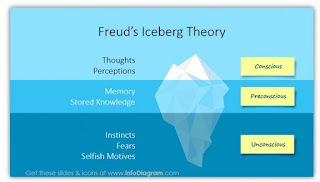How Lighting Affects Camera Techniques for Moving Image.
How Lighting Affects Camera Techniques For Moving Image
Lighting is a good indicator to an audience member of the atmosphere or feel that the filmmaker wishes to convey; this is done to enhance and better communicate the plot. Evoking emotion is imperative to the successful interpretation of any film, and lighting is an excellent example of this as the viewer relates the lighting to a particular mood or atmosphere.
High-key lighting is usually naturally sourced, softer light used alongside a three-point lighting system "to help improve high contrast ratios" and "is used to produce images that produce an optimistic, upbeat reaction"; with high key lighting, softer shadows are casted on the subjects and their surroundings are better exposed giving the final footage a lighter and happier feel.
Conversely, Low-Key lighting creates effectively the opposite atmosphere to high-key lighting, generally being much more harsh and hard on the subject. Horror as a genre tends to rely heavily on low-key lighting throughout production, as low-key lighting creates an aura of mystery and tension to the viewer, displaying a "varying range of deep negative emotions".( Michael Gabriel, Understanding the Basics of High-key vs. Low-key Lighting)
This makes camera work imperative to lighting, as different light and different light directions have a massive impact on the quality of the footage. Adjusting camera settings to the available light is key; adjusting the cameras aperture and ISO settings according to the lighting used ensures better quality footage, and focal points and angles used often accentuate the chosen lighting throughout the production...
For example, in the clip from Silence of The Lambs (1991), the director, Jonathon Denne, uses light to particularise the cruel and evil nature of the composition, Doctor Hannibal Lecter played by Sir Anthony Hopkins. This is emphasised through using different lighting on different characters; the protagonist, Clarice, is generally well exposed to the camera, meaning that the camera does not focus on any one of her features but rather creates a softer, lighter aura to her presence, in comparison, Lecter, is split lit, casting harsh and dark shadows on his features leading to the aura of sheer malevolence that Denne wished to portray to the audience throughout the production.
For example, in the clip from Silence of The Lambs (1991), the director, Jonathon Denne, uses light to particularise the cruel and evil nature of the composition, Doctor Hannibal Lecter played by Sir Anthony Hopkins. This is emphasised through using different lighting on different characters; the protagonist, Clarice, is generally well exposed to the camera, meaning that the camera does not focus on any one of her features but rather creates a softer, lighter aura to her presence, in comparison, Lecter, is split lit, casting harsh and dark shadows on his features leading to the aura of sheer malevolence that Denne wished to portray to the audience throughout the production.
Whereas in the clip from Afterlife (2018), Ricky Gervais chose to use high-key lighting in order to retain the light-hearted and humorous aura that he intended to display to his audience. The compositions, Tony, his colleague and the woman that they are interviewing , are consistently well exposed and the shadows casted are soft. In the over the shoulder shot of the woman being interviewed, a fill light has been angled in order to better expose her features as she is standing in front of a window, this is done in a Rembrandt-esque manner, leaving a triangle of light below her left eye, giving more dimension and depth to the composition.
In summary, lighting is vital when considering camera techniques for moving image. This is due to lighting not only being used to expose subjects to the camera, but also to convey further meaning, emotion and atmosphere in the scene; when shots are filmed this lighting comes into play when considering specific angles, light positioning and adjusting the camera and focus ring.
Bibliography:
- Denne, J (1991), The Silence Of The Lambs, Strong Heart/Demme Productions, Hollywood.
- Gabriel.M,(2013), Understanding The Basics of High Key vs Low Key Lighting, Contrastly, Available from:https://contrastly.com/understanding-the-basics-of-high-key-vs-low-key-lighting/
- Gervais.R, (2018), Afterlife, Produced by Ricky Gervais and Netflix


Comments
Post a Comment